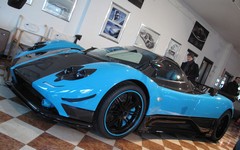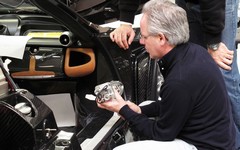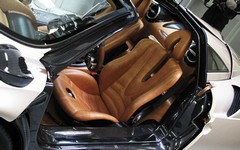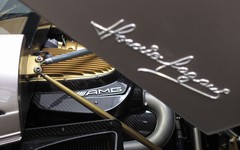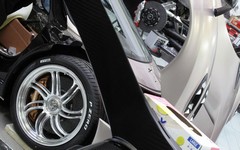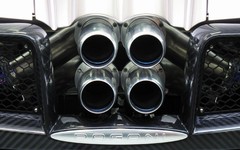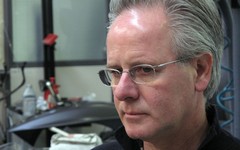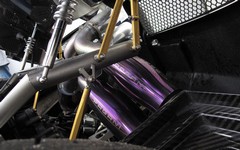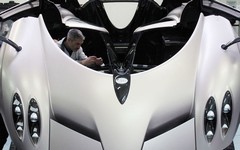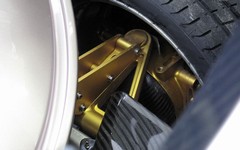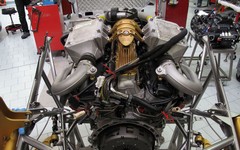Pagani Huayra Ready For Lift-Off
PH visits the Pagani factory on the eve of its latest reveal
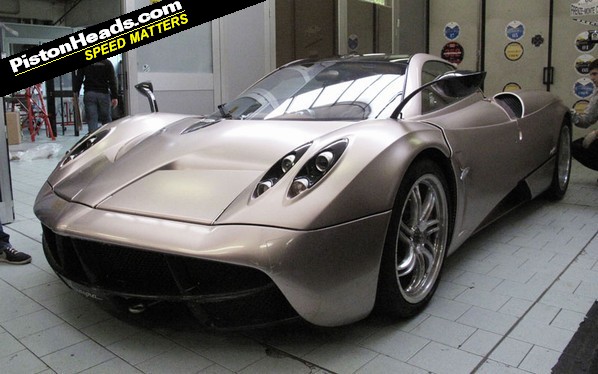
There are people rushing around everywhere and a sense of mild panic. Pistonheads is here, after all, just hours before the Huayra will be shipped to Milan for its official public unveiling and over a week before the rest of the industry will see it at Geneva. What on earth are they doing letting us through the door at this late stage? Who knows but the chance to see the Huayra in the flesh before anyone else is too good to pass up. Once production is up to full speed 60 Huayras a year will be built, opening up new markets like the US and Japan to Pagani. This is a big deal then.
First things first though - how the hell do you pronounce that name? Even the Pagani staff seem uncertain, our Italian host opting for an elongated 'Hoo-aye-rah' too temptingly like a 'who are yer!' football chant to avoid the comparison. The multi-lingual Italian-German PR man opts for a simpler 'why-rer', which is less of a mouthful.
Through a door at the side of the showroom and, bang, there we are in the midst of the Huayra's final preparations for its first public appearance. With all the panels open it's hard to make out the actual shape but even in this exploded view it's clearly a thing of incredible beauty.
It's only part-way through our tour that we get to see another Huayra - a clearly hard-working prototype - with all its panels and doors closed and take in its lines for real. Compared with the blingy, somewhat tarty beast the Zonda has evolved into of late (evidence for the prosecution can be found in the foyer in the shape of a bright turqoise 'Uno' roadster) it's refreshingly clean and unadorned too - obviously a Pagani but equally clearly an evolutionary step on from the Zonda. It's big though, the track alone 70mm wider than the Zonda's.
The bodywork seems to fit tighter, the flowing curves much more sinuous than the brutal functionalism seen in recent Lamborghinis or even Ferraris. In character and positioning the most obvious rival is the Aston Martin One-77, both cars taking an almost pornographic approach to extravagant engineering as art. Both have been designed to look as good naked as they do clothed too and having taken the Huayra in whole it's exciting to once again peel back the bodywork and really soak in the detail.
Everything on the Huayra celebrates a distinctively Pagani take on form and function, the air vents as structural members just one example. Another would be those ribbed, gold anodised aluminium covers on top of the intercoolers. Machined from one solid lump of aluminium they enclose expansion tanks for the coolant system and intercoolers themselves.
No detail is too geeky to overlook. The bolts, all 3,000 of them, are titanium, branded with the Pagani logo and cost around €60 apiece. Who cares about this stuff? Horacio Pagani (pic right) clearly does, carefully watching the work on the number one Huayra, eyes darting rapidly around, picking up small details and, where necessary, stepping forward and adjusting a component or checking its placement personally.
So how does he feel about launching his new baby at the same motor show former employers Lamborghini will also be showing their new supercar? Speaking through an interpreter he shrugs. "I will go to their stand to look at the car and like a child say 'bella, bella'" he says. "And then I will go back to mine and be nit-picking about what we can improve!"
For all the steeliness about Pagani there's a childlike enthusiasm for his art that is impossible to ignore. Indeed, in the showroom outside the workshop where the Huayra is taking shape are key artefacts marking his progression from a baker's son in Argentina shaping cars out of flour and water (they're here, in a glass case) to an ambitious young engineer seeking his fortune in Italy's supercar heartland with a letter of recommendation from countryman Juan Manuel Fangio in his pocket. This too is in the showroom, framed and in pride of place on the wall.
Fangio's influence weighs heavily on Pagani too, the Mercedes engines in the Zonda and now Huayra famously a result of a suggestion from Fangio himself. The Huayra's gullwing doors, though they raised considerable engineering challenges, are a reference to the 300SLs raced by Mercedes when Fangio was a factory driver there in the 50s.
The Zonda's characterful mix of the traditional and cutting edge is taken on to the next level by the Huayra, charismatic detailing like the leather straps holding the rear clamshell and wonderfully rich, opulent interior now distinctive Pagani styling ticks. The exposed springs and linkages for the gear selector are just one exquisitely realised detail in a car brimming with delightful flourishes.
But there's new stuff too, our hosts demonstrating the front aero flaps that can move through 40 degrees to modify the flow of air over and through the Huayra's body. Similar ones at the back do the same and, like the wing on the McLaren MP4-12C, work as an air brake to reduce pitch under heavy braking. On the Pagani this is combined with active front dampers that actually stiffen and raise the front of the car to maintain the optimum attitude. Or avoid embarrassing, Top Gear style nose scraping exits from underground car parks.
We're even treated to a quick fire-up of the AMG 6.0-litre engine. And there's no need to worry about the turbos stealing some of the thunder of the previous normally aspirated 7.3, a subdued but menacing idle erupting into a thunderous bark through those distinctive quad exhausts barely a third of the way into the rev range. Our man tells us it'll even do 24mpg - not bad for a 700hp twin-turbo V12 it has to be said.
Appetites suitably whetted we've finally outstayed our welcome and from this enclave of carbon fibre and million-dollar supercars the reality of a rain-soaked Italian industrial estate is a harsh wake-up call. In just a few hours time the Huayra will be making its debut in Italy's fashion capital, in just a few days fighting for the limelight at one of the most supercar packed motor shows in years. The Lamborghini had best be something special, because the ambitious Argentinian who used to work there has come up with another show-stopper of his own.
Gassing Station | General Gassing | Top of Page | What's New | My Stuff


